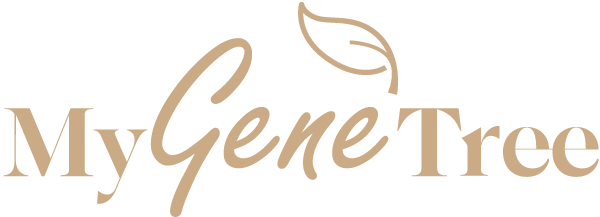Printing your family tree

Once you've created your family tree, you'll want to preserve it. By safeguarding your creation, you're producing a family heirloom that'll hold family information for generations.
Quality paper, ink and frame glass will help achieve this.
At Mygenetree, we recommend fine art (Giclee) printing for your family tree.
First, you'll want to know the term 'Giclee' Printing.
Printing as a standard digital print vs a 'Giclee' print comes down to two main factors; the longevity of your art and the materials needed to achieve this standard.
One of the materials that significantly impact the longevity of your family tree is your paper selection.
Archival paper (usually a cotton rag paper) is our preferred paper choice. Archival paper means its acid-free and is known for its longevity, detail, resistance to fading in a look and feel factor that screams high quality!
There's a wide variety of materials available in Giclee printing (glossy paper, matt paper, textured paper, canvas and artisan paper), just make sure it's 100% archival.
Giclee printing doesn't stop at the paper; it also means your family tree will need to be printed on a specific type of printer with specialized ink. (It's a professional-grade inkjet printer that uses a pigment-based ink).
Simply put, a Giclée print is a high-quality print using the best practice and the best quality printer, paper and ink that's available.
Finding a Printer: Fine Art Printers & Framing:
When it comes to finding a printer in your area, a quick google search should give you a few options. However, I have put together this list of fine art printers to help make it easier:
- US: American Frame: https://www.americanframe.com/ or Tribeca Printworks: https://www.tribecaprintworks.com
- CA: Germotte Photo & Framing Studio: https://germotte.ca/
- UK: Mp Fine Art & Photographic Printing: https://www.mpfineartprinting.co.uk/ or The Print Space: https://www.theprintspace.co.uk/
- IE: Sal Studio: http://salstudio.ie/
- AU: Prolab: https://www.prolab.com.au/ or Print N Frame: https://www.printnframe.com.au/ or Southern Cross Printing: https://southerncrossprinting.com.au/
- NZ: Endemic World Artist Services: https://artistservices.co.nz/ or Print Art: https://www.printart.co.nz
File Type:
Another aspect of Giclee printing is your file needing a resolution of at least 300 DPI (dots per inch)
Think about when you zoom in on a photograph. The more you zoom in, the more distorted the image becomes. The more dots there are in a small space, the more detailed the final product becomes. This is why it's crucial to have a DPI of 300.
How to make sure your file is 300dpi in our family tree editor:
- TIFF: exports to 300ppi as standard
- PDF: exports as a vector graphic so the dpi is irrelevant
- JPEG: slide the quality slider to 100% for 300dpi
File Export Recommendations:
- TIFF: Highest quality, larger file size (Most online printers will want this file type - You'll have to preset your export size).
- PDF: All our PDF files are vector-based meaning you get high-quality at a small file size (Good for when you want to go to a physical print shop)
- JPEG: Good quality, small file size (Some online printers only accept this file type, just make sure you have the quality slider at 100%)
Note:
Our "PDF" files contain vector-based artwork… therefore, when exported, they can be enlarged as big as you want while remaining tack sharp.
Also when exporting as a "PDF", you will need to make sure you let your printer know that your file is a "Vector" PDF and you will also need to specify the exact size you want your family tree to be printed on. This way, they can enlarge the tree to your desired sizing.
When exporting as a "TIFF" or JPEG" file, you will need to specify the exact size you wish to print your family tree.
Print Size:
The further back we go in the generation's on our family tree templates, the larger the family tree will need to be printed. The more generations your family tree template goes, the smaller the text becomes. Having a too smaller print can make it hard to read, especially once you hit six and seven generations.
To ensure all your text is readable, we recommend a minimum print size of A3 (297×420 mm or 11.7×16.5 in).
Below is some recommend printing measurements:
- A3 print size (297×420 mm or 11.7×16.5 in)
- A2 (420×594 mm or 16.5×23.4 in)
- A1 (594×841 mm or 23.4×33.1 in)
More Posts
-
How passenger lists...
Did your ancestors migrate from another country during the 19th or early 20th centuries? If they did, then it's likely you will find your ancesto...
Read More -
How military record...
Did your grandfather, great-grandfather, or even great-great-grandfather serve in the military? It is very likely that at least one of your ancesto...
Read More -
How newspapers can ...
Searching local historical newspapers may offer some significantly valuable information about your ancestor. With so many historical newspapers no...
Read More



